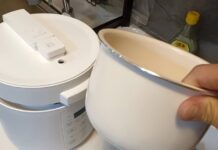1. Structure of Electric Meters
An electric meter, also known as an electricity meter, is composed of several components:
- Voltage Coil: The coil is parallel to the load wire and consists of multiple loops.
- Aluminum Disk Component: This component is located on the copper shaft and can rotate freely in a magnetic field.
- Mechanical Gearbox: Attached to the shaft of the aluminum disk, it displays the number of rotations of the disk.
- Permanent Magnet: Creates torque to prevent the rotation of the aluminum disk in its magnetic field during operation.

2. How to Read a Single-Phase 2-Wire Electric Meter
A single-phase 2-wire electric meter is the most commonly used type for single-phase power grids.
Meaning of Parameters in a Single-Phase 2-Wire Electric Meter:
| Parameter | Typical Value | Meaning |
| Voltage | 220V | The rated voltage of the electricity meter. Must be strictly adhered to. |
| Current |
|
The rated current and permissible overload current of the meter. Maximum current must be strictly adhered to, as it may damage the meter. The rated current affects the accuracy of energy measurement (kWh). |
| Revolution/kWh |
|
The number of rotations of the aluminum disk required to reach 1 kWh. |
| Frequency | 50Hz | The rated frequency of the electricity meter. Must be strictly adhered to. |

How to Read a Single-Phase 2-Wire Electric Meter
A single-phase 2-wire electric meter has 6 digits:
- The first 5 digits in black represent values from 00000 to 99999 kWh.
- The last digit in red represents 1/10 kWh.
For example: If the meter reading shows 999853, it can be read as 99985.3 kWh. Typically, people omit the decimal part and read it as 99985 kWh.

3. How to Read a 3-Phase Electric Meter
How to Read a Direct 3-Phase Electric Meter
A direct 3-phase electric meter is a common type of 3-phase electric meter. The electricity reading of a direct 3-phase electric meter is read similarly to a single-phase 2-wire electric meter.
Direct 3-phase electric meters are usually available in types: 10(20)A, 20(40)A, 30(60)A, 50(100)A.
A direct 3-phase electric meter also consists of 6 digits:
- The first 5 digits in black represent values from 00000 to 99999 kWh.
- The last digit in red represents 1/10 kWh.
For example: If the meter reading shows 310721, it can be read as 31072.1 kWh (without multiplying by any factor). Typically, people omit the decimal part and read it as 31072 kWh.

How to Read an Indirect 3-Phase Electric Meter
An indirect 3-phase electric meter has a different wiring method with more terminal connections and requires the use of current transformers. This type of meter is usually used for high power loads and has a different method of reading the electricity reading.
Indirect 3-phase electric meters are usually available in types: 20(40)A, 30(60)A, 50(100)A.
The rated current of an indirect 3-phase electric meter is typically 5A (red color) and has an additional marking for indirect measurement (green color).
An indirect 3-phase electric meter also consists of 6 digits:
- The first 5 digits in black represent values from 00000 to 99999 kWh.
- The last digit in red represents 1/10 kWh.
For example: If the meter reading shows 310721, it can be read as 31072.1 kWh.

Unlike a direct 3-phase electric meter, this reading is just a readable value. To calculate the actual electricity usage, it needs to be multiplied by the current transformer ratio and the measuring voltage transformer.

For example: If the current transformer ratio is 75/5A = 15 times, the actual electricity usage reading of the meter is: 31072.1 * 15 = 466081.5 kWh. Therefore, the electricity reading is 466081.5 kWh.
Above is a guide on how to read different types of electric meters simply and accurately. If you have any questions, please leave a comment below!


































